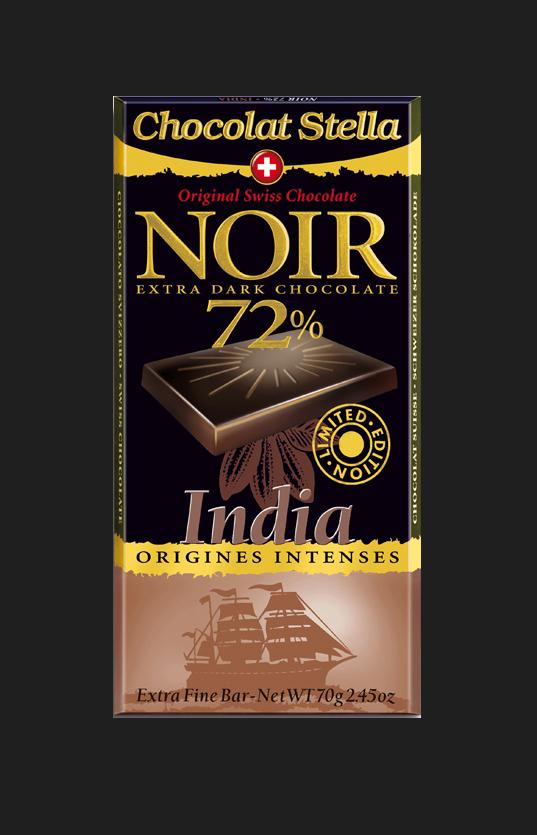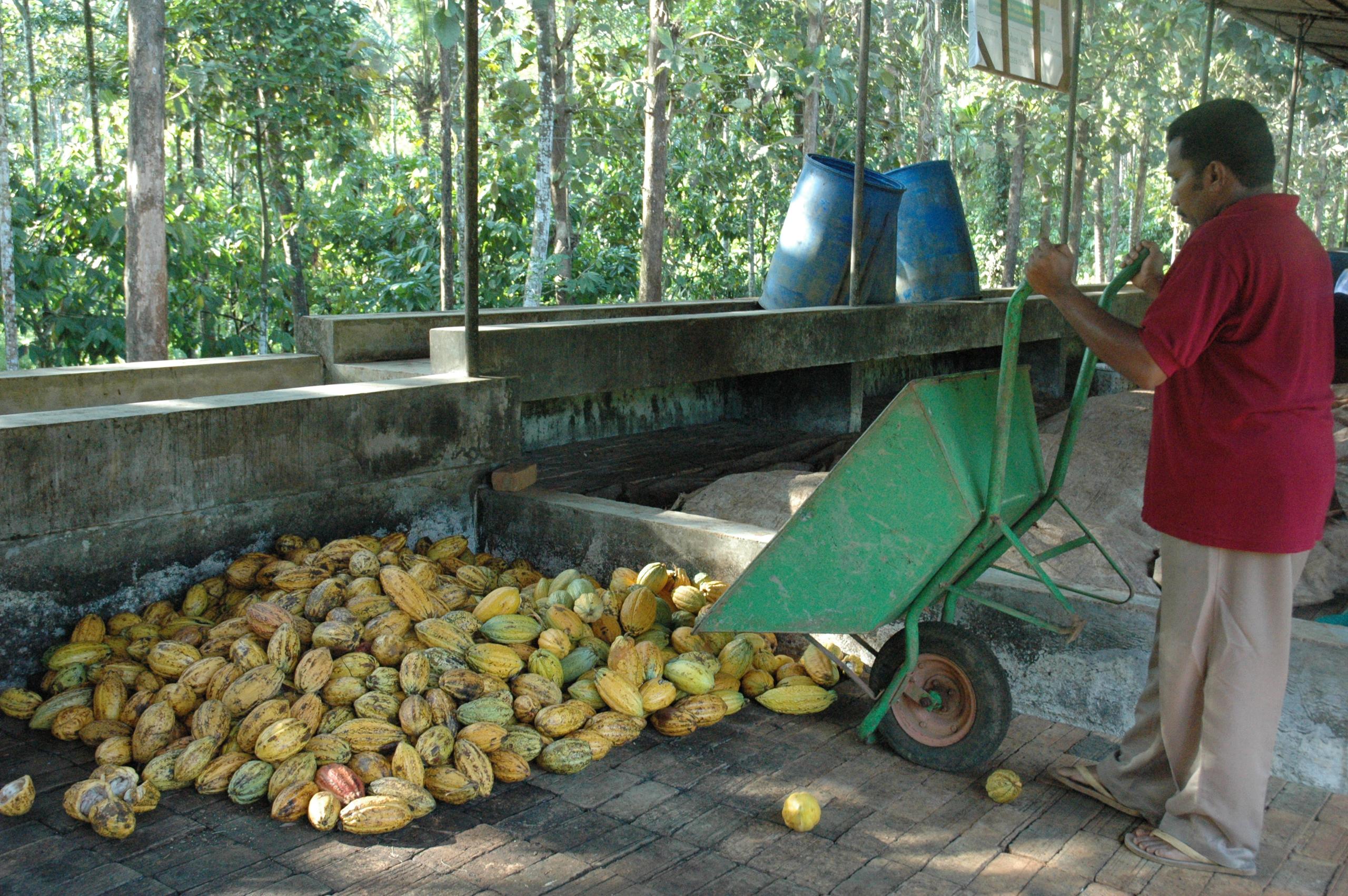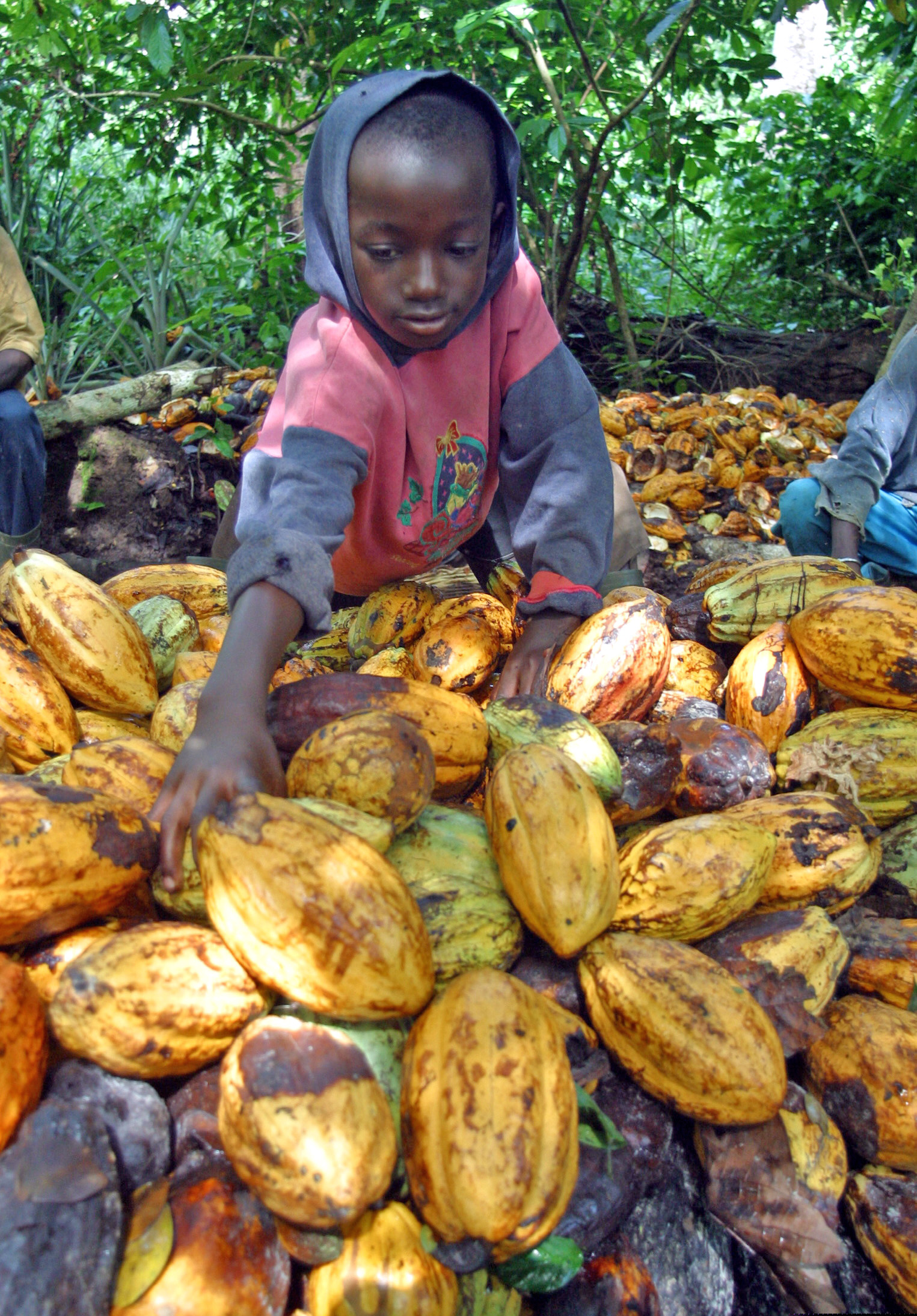Swiss chocolate opens doors for Indian cocoa farmers

Despite growing demand for chocolate, small volumes and volatile domestic prices makes growing cocoa a struggle for small farmers in India. Focusing on quality instead of quantity offers them an opportunity to access new markets.
The train only stops on request at the Kreuzlingen Bernrain railway station that overlooks Lake Constance in northeastern Switzerland. Appearances can be deceptive because the tiny, tranquil-looking station masks a hive of activity nearby. On the other side of the train tracks, the Stella Bernrain chocolate factory is working at full steam. Winter is the busiest time of year for the company as more chocolate is consumed at this time of the year than any other season.
One of Stella Bernrain’s most exclusive products is single-origin chocolate. These chocolates are made from cocoa beans harvested from a specific country. The company allows you to sample the unique taste of Ecuador, Madagascar, Trinidad or Costa Rica – in chocolate form. The latest country to join this premium chocolate category is India, with an exclusively Indian dark chocolate bar called “India Noir 72%”.

“It is part of our strategy to find different countries to produce a really special single-origin chocolate,” Sonbol Valadi, head of purchasing, told swissinfo.ch. ”People in Europe are fascinated by India and it is really special to have the name on a chocolate bar.”
Cocoa scarcity
Despite its low profile in the chocolate industry, India has been a cocoa producer for almost 50 years. Cocoa production was introduced to the country in 1965 by Cadbury, now part of the Mondelez International group, that purchases most of the cocoa beans grown in the country.
“Today we source a third of our cocoa requirement from India, which is saying a lot because our business has been growing significantly over the last seven to eight years due to a significant increase in domestic consumption,” Siddhartha Mukherjee, executive director at Mondelez India Food Limited told swissinfo.ch.
Cadbury’s cocoa shortfall coincides with statistics from India’s Directorate of Cashewnut and Cocoa Development Board, that pegs production in 2013 at 15,600 tonnes against a domestic demand 45,000 tonnes from the chocolate industry.
Despite the high demand, there is not enough of an incentive for cocoa farmers to step up production. In India, cocoa is grown as an intercrop with rubber, coconut, arecanut and coffee, all of which are more important to farmers than cocoa as a stable source of income.
“Rubber and not Cadbury is our biggest competitor,” confirms Markus Lutz, product development manager at Stella Bernrain.
Cocoa farmers often uproot cocoa trees and replace them with more lucrative cash crops like rubber to take advantage of rising prices.
The price for cocoa on the other hand varies a lot depending on local weather conditions.
“The main cocoa harvest in India takes place around the rainy season when the moisture content in the beans is higher. The farmers therefore get a lower price for their produce, as the price is calculated on the basis of dry bean weight,” K.T Bhat, chief manager cocoa, for the Cocoa Marketing and Processing Cooperative Limited (CAMPCO) told swissinfo.ch.
Wet conditions also means there is not enough sunlight to dry the beans making them prone to mould and rejection by buyers. The resulting unpredictability in supply of beans compels domestic buyers to source most of their cocoa from international markets and also helps them avoid paying a premium for scarce Indian cocoa beans.
Thus cocoa farmers stand to lose a lot if the weather is bad. This makes planning and investment difficult, especially for small cocoa farmers who only produce small volumes of cocoa beans.
Minimising the risk of a poor cocoa yield is what Swiss chocolate manufacturer Stella Bernrain offered small cocoa farmers. It provided an alternative business model that was based on quality rather than quantity for those farmers willing to invest in cocoa bean processing know-how. It also sought to minimise the unpredictability associated with the domestic cocoa market.
“We promised them that the price would be transparent and would be based on the international trading price plus the premium for organic and fair trade cocoa beans,” Antony Panakal, business development manager told swissinfo.ch.
Domestic companies interested in their cocoa beans are not as strict when it comes to quality. But transparent pricing and the opportunity to export their produce was a strong incentive for some of the more enterprising cocoa farmers.
Investing in farmers
Like the domestic buyers, Stella Bernrain also faced a bottleneck when it came to sourcing Indian cocoa beans despite a very modest requirement of 12-20 tons. The challenge was much harder for the Swiss company, as it was looking to procure high-quality, organic cocoa beans. The company partnered with two farmers cooperatives in the state of Kerala to obtain the first batch, but the pioneering attempt was far from successful.
“In 2009 we got the first container of cocoa beans but it didn’t meet our quality standards and we could only make cocoa butter out of it,” says Panakal.

The company sent Lutz to India to help the farmers improve the cocoa bean quality and master processing techniques, especially the drying and fermentation of cocoa beans. They also invited a few representatives of Indian cocoa farmers to visit the factory in Switzerland to learn the basics of chocolate quality requirements.
“Our investment paid off and we got better quality cocoa beans in 2010, that we were able to transform into the first premium Swiss-made India chocolate,” shares Panakal.
This model proved attractive to small cocoa farmers whose smaller outputs made it advantageous to opt for higher quality beans.
“Investing in new fermentation and processing techniques is a bit difficult in the beginning but it is worth it in the long-term,” Joseph Chackochan, chairman of the Indian Organic Farmers Producer Company Limited (IOFPCL) told swissinfo.ch.
Another cocoa cooperative partner, Manarcadu Social Service Society (MASS), now invests 20% of its profits in quality improvement measures like centralised processing facilities to ensure a more standardised product.
“This way we can ensure we have the same quality as big plantations. Now we can compete with any big player in the industry when it comes to quality,” says Bijumon Kurian, chairperson of MASS.
Whether the approach is increasing quality or quantity, chocolate manufacturers all over the world are investing in farmers to ensure that there is enough cocoa beans to meet growing chocolate demand across all segments of the market.
“There is definitely a trend of scarcity. Due to increasing demand and limited supply, we will have less cocoa in the future. This is definitely an issue for a company that focuses on premium chocolates,” says Nathalie Zagoda, spokesperson for well-known Swiss chocolate brand Lindt & Sprüngli.
According to her, the predicted scarcity has encouraged many chocolate companies to create initiatives that help cocoa farmers improve the quality of their produce.
Examples include the Lindt & Sprüngli Farming ProgramExternal link, Mondelez International’s Cocoa LifeExternal link and the Mars group’s Cocoa Sustainability InitiativeExternal link.
This farmer-friendly approach is best summed up by Mukherjee of Mondelez India.
“What is good for the farmers is good for the cocoa crop, and what is good for the Indian cocoa crop is eventually good for us.”
Chocolate was first grown by the Mayas in Central America.
It came to Europe in the 15th century.
Chocolate manufacture started in Switzerland in the 19th century. Swiss pioneers introduced a number of important innovations, including hazelnut chocolate, milk chocolate and filled chocolate.
The conching process, developed by Rodolphe Lindt of Bern, produced smooth chocolate.
The Swiss chocolate industry has been export based since the beginning of the 20th century.

In compliance with the JTI standards
More: SWI swissinfo.ch certified by the Journalism Trust Initiative












You can find an overview of ongoing debates with our journalists here . Please join us!
If you want to start a conversation about a topic raised in this article or want to report factual errors, email us at english@swissinfo.ch.